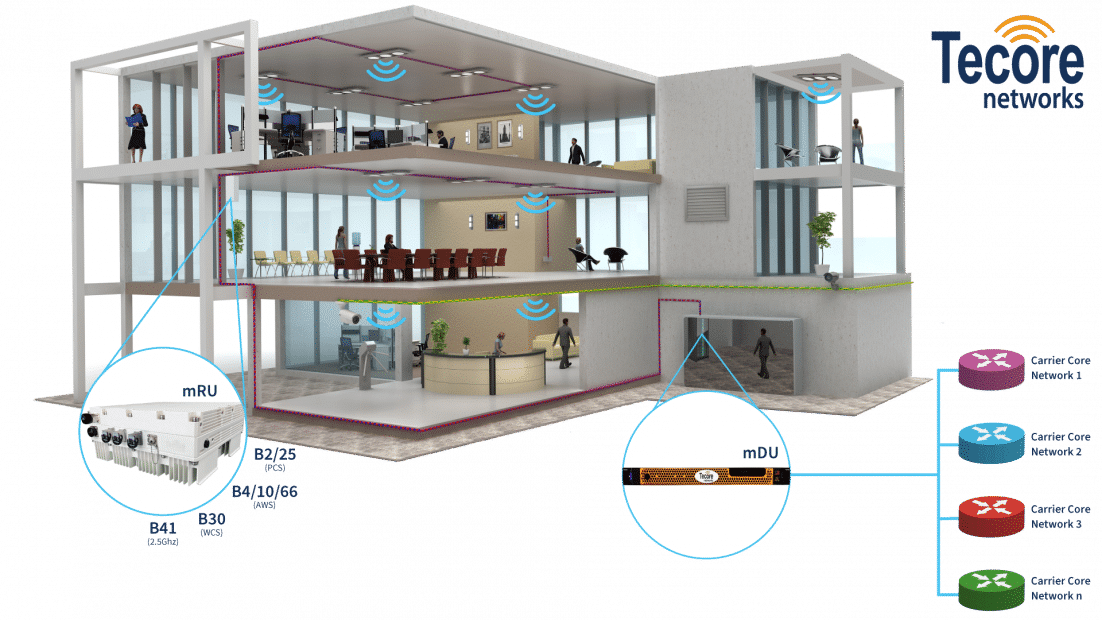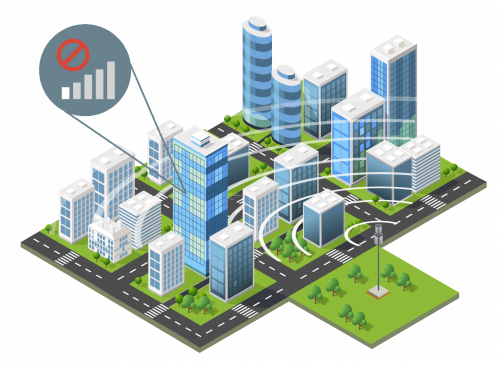
sDAS
Smart DAS, The Next Evolution of DAS
Overview
As cellular networks evolve to the next generation and technology users demand superior coverage with low latency, high throughput and superior user experience, Distributed Antenna Systems (DAS) once considered the de facto standard to provide in-building coverage has over time increased in footprint, infrastructure, costs and time to deploy.
Tecore’s sDAS (Smart Distributed Antenna System) is the next evolution of DAS, delivering the same excellent coverage and capacity as a traditional DAS, in a smarter, more cost-efficient, and compact solution for in-building coverage. Smart DAS leverages the mDU (Multi-RAT Digital Unit) for signal generation to eliminate the costly headend equipment and valuable building space that it would typically occupy, saving money, time and space. Tecore’s mRUs (Multi-RAT Radio Unit) are not amplifiers, but proprietary radios that intelligently distribute the multi-carrier signals to the site simultaneously, with daisy chaining capability to minimize fiber homeruns, infrastructure costs, and electrical power needs.
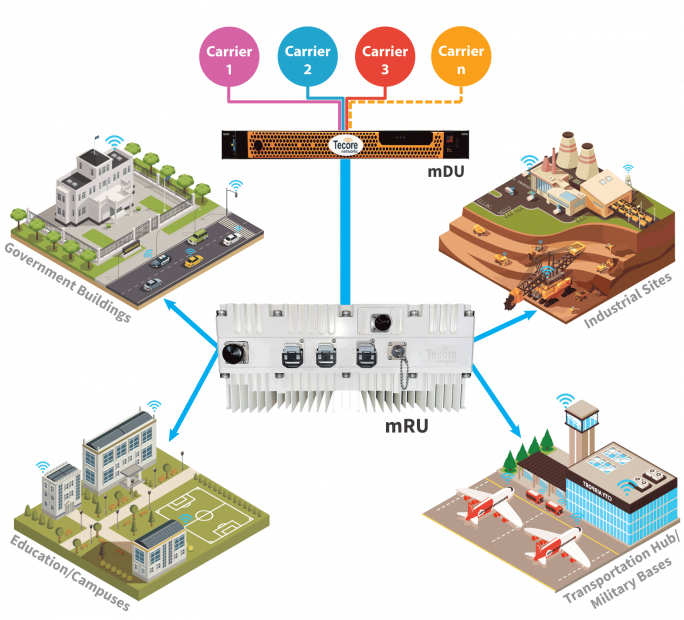
Key Benefits
Combines iDAS and oDAS in one radio type
80W Radio supporting 7 Bands per radio and operating 4 simultaneously at 20 watt/band (43dBM)
Reduced CAPEX/OPEX compared to traditional DAS headend equipment and building space requirements
Supports multiple carriers and frequency bands on the same hardware
Smart DAS (sDAS) vs Traditional DAS
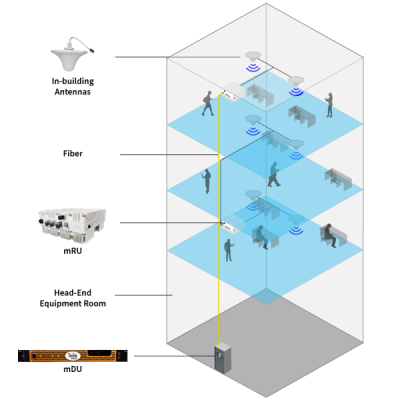
Smart DAS (sDAS)
sDAS, the latest evolution of DAS, allows Tecore’s mDU (multi-RAT Digital Unit) to communicate directly with multiple network operator’s core network and combine these signals to distribute directly to Tecore’s mRU (multi-RAT Radio Unit) for an all-in-one DAS solution. This allows for a more cost & infrastructure-effective solution, that allows smaller business owners and venues to consider a DAS deployment where traditional DAS is economically prohibitive.
Key Elements of sDAS:
- Reduced Head End room size – requires only a single rack
- No additional electrical service / HVAC required.
- Simplified Installation/Commission, only utilize 1 type of head end equipment.
- Green solution: Up to 90% REDUCTION in CAPEX/OPEX, Head End Room Size, Electrical Service, HVAC service
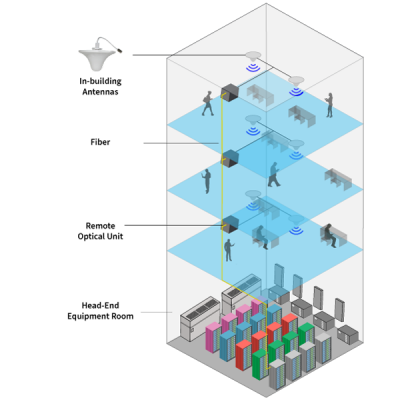
DAS
Traditional DAS systems utilize carrier equipment to generate a cellular signal that is distributed between a centralized signal source and remote DAS nodes strategically placed around a building for user equipment and devices to connect to. For multi-carrier DAS deployments, this can get costly, as site owners must deploy different proprietary carrier equipment for each carrier they would like to support. This requires a large investment in space, time, and capital, which limits DAS as an economic solution in only extremely large spaces.
Traditional DAS Requirements:
- Large Head End room size requirement (500 sq. ft – 3000+ sq. ft)
- Large Electrical service requirement (800 Amps – 4000 Amps)
- Large HVAC requirement (10 Tons – 500 Tons of cooling)
- Complex Installation/Commissioning (10 – 60 racks of equipment with 10 shelves per rack of coax/fiber wiring)
sDAS Design
sDAS leverages an unique architecture that showcases the distinct multi-carrier technology found in the mRU and mDU to provide an effective DAS solution:
mDU: Digitally combines signals from multiple carriers in multiple bands, replaces the size and power-intensive head-end unit in a typical DAS installation, and connects directly to carrier networks via an S1AP/S8HR interface. No other active head-end equipment or Carrier RAN equipment is required at the head-end location. Learn More.
mRU: Broadcasts each carrier’s signal independently in each band simultaneously. These are not amplifiers, but proprietary radios that can be used by all carriers simultaneously, and have daisy-chaining capability for simplified installation. Learn More.
